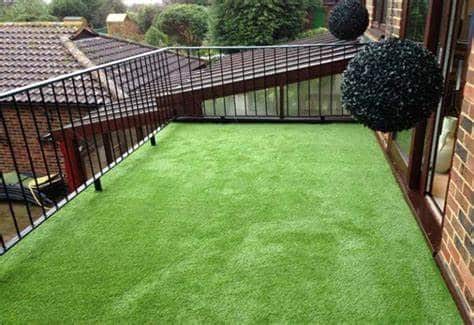How To Install Artificial Grass On Steep Surface In San Diego?
 Artificial grass, also known as synthetic turf, has gained popularity for its low maintenance and aesthetic appeal. While it’s relatively easy to install on flat surfaces, installing it on a steep slope presents unique challenges. However, with the right techniques and tools, you can achieve a seamless and long-lasting artificial grass installation on steep surfaces. Here are five tips to help you accomplish this:
Artificial grass, also known as synthetic turf, has gained popularity for its low maintenance and aesthetic appeal. While it’s relatively easy to install on flat surfaces, installing it on a steep slope presents unique challenges. However, with the right techniques and tools, you can achieve a seamless and long-lasting artificial grass installation on steep surfaces. Here are five tips to help you accomplish this:
- Before installing artificial grass on a steep slope, it’s crucial to prepare the surface adequately. Start by clearing the area of any debris, rocks, or vegetation. Smooth out the surface as much as possible to ensure proper drainage and prevent unevenness. Consider using a retaining wall or edging to contain the artificial grass and prevent erosion.
- The base material you use plays a significant role in the stability and durability of the artificial grass installation. For steep surfaces, opt for high-quality base materials such as decomposed granite or crushed rock. These materials provide excellent drainage and help prevent slippage. Ensure the base is compacted properly to create a firm foundation for the artificial grass.
- Proper drainage is essential for preventing water buildup and maintaining the integrity of the artificial grass. On steep surfaces, water runoff can be more pronounced, leading to erosion and instability. To address this, install a perforated drainage pipe along the base of the slope to channel water away effectively. Additionally, consider incorporating a layer of permeable aggregate beneath the artificial grass to enhance drainage further.
- Securing the edges and joints of the artificial grass is crucial for preventing shifting and ensuring a seamless appearance. Use quality adhesive or seaming tape to join the edges of the turf securely. Additionally, anchor the edges with landscape staples or nails to keep them in place, especially on steep slopes where gravity can exert significant force.
- Not all artificial grass products are suitable for steep surfaces. When selecting artificial grass for a steep slope, opt for a product specifically designed for such applications. Look for features such as shorter pile height, superior drainage capabilities, and enhanced durability. Additionally, consider the color and texture of the turf to ensure it blends seamlessly with the surrounding landscape.
FAQs
Can I Install Artificial Grass On Any Steep Surface?
While artificial grass can be installed on steep slopes, extremely steep surfaces may pose challenges and require additional reinforcement. It’s essential to assess the slope’s gradient and consult with a professional to determine the feasibility of installation.
How Do I Maintain Artificial Grass On A Steep Slope?
Regular maintenance is crucial for preserving the appearance and longevity of artificial grass on steep surfaces. Remove debris, brush the turf to maintain its upright position, and inspect for any signs of damage or erosion. Address any issues promptly to prevent further damage.
Will Artificial Grass On A Steep Slope Require More Frequent Replacement?
With proper installation and maintenance, artificial grass on a steep slope can last for many years without the need for frequent replacement. Choosing high-quality materials and following recommended installation practices can significantly extend the lifespan of the turf.
Conclusion
Installing artificial grass on a steep surface requires careful planning and execution to ensure a successful outcome. By following these tips, you can overcome the challenges associated with steep slopes and create a beautiful and functional outdoor space that requires minimal maintenance. With proper preparation, quality materials, and attention to detail, you can enjoy the benefits of artificial grass on even the steepest of surfaces. For more information, contact Artificial Grass San Diego at (619) 784-8855.

